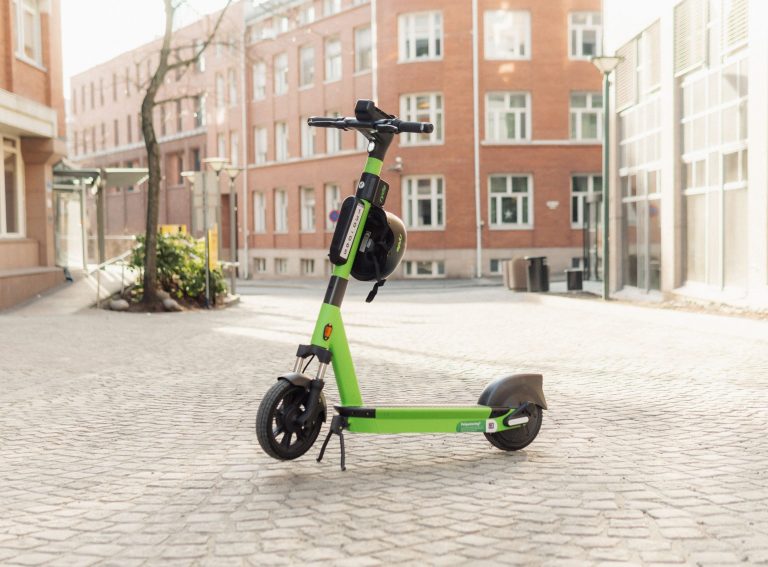Since its launch in 2023, London-based startup Lyte Aviation has secured $1 billion in preorders, spread across 19 projects worldwide. With plans for prototypes by 2026 and mass production targeting 2030, Lyte is quickly driving solutions for sustainable mass transit.
In the cockpit is Founder and CEO Freshta Farzam, a German entrepreneur who champions a bold mindset and collaborative spirit. Under her leadership, Lyte Aviation is developing the LA-44 SkyBus, a heavyweight 40 seater hybrid eVTOL aircraft with a 1,000 km range and top speed of 300 km/h.
Zag Air: Your project began by asking why no one was scaling eVTOL aircraft. What did you discover?
Freshta: “Everyone seemed focused on achieving takeoff, particularly with one- or two-seater air taxis, and most were committed to battery-electric propulsion. Some designs were highly innovative and futuristic, but our approach was different. Initially, we explored futuristic concepts too, but we realised it was more important to base our product on proven and reliable designs. For instance, we looked at tandem tilt-wing configurations, which have been extensively tested in military and other applications. We wanted to ensure our concept was grounded in tried-and-tested technology.”
Zag Air: When you entered the AAM sector, did you notice a status quo that you wanted to change?
Freshta: “Absolutely. There was a clear pattern in the market, and I wanted to break away from it. Our vision was to scale up dramatically—offering ten times the passenger capacity, ten times the range, and embracing hydrogen technology.
“It starts with boldness and mindset. We have to allow ourselves to think bigger and expand our horizons. For example, when we introduced Skybus, we had to explain its potential—it can land almost at your doorstep, carry 40 passengers, and offer new routes. Skybus isn’t just about transporting people; it’s about delivering more passengers and goods more efficiently across a broader network. Believing in its disruptive potential was key to getting others on board. It’s exciting to see how the AAM industry has created pathways for ideas like ours, building on the foundation of air taxis and vertiport infrastructure.”
Zag Air: Did you design your 40-seat aircraft to feel familiar to passengers who are used to traditional air travel?
Freshta: “I always try to approach our design from the customer’s perspective—I’m a picky customer myself! We deliberately designed the aircraft to look like something any person would recognise. The tandem tilt-wing design was a conscious choice because it feels familiar and reassuring. Psychologically, having two wings gives passengers a sense of safety, and that’s important when introducing new technology.
“In terms of gaining public trust, there are public awareness projects we’re starting to join in the UAE and the US. In Germany, people are interested, but it still feels like a “future maybe.” That’s why we focus on leading by example—starting in countries more open to innovation. As people see the technology in action and experience it themselves, trust will build naturally over time.”

Zag Air: How do you approach the challenge of balancing scalability with sustainability?
Freshta: “For me, sustainability and scalability go hand in hand, but I’ve learned that the pace of progress in sustainability can be slower than we’d like. It’s realistic to scale up certain technologies, but the challenge lies in the ecosystem. For example, we wouldn’t rely on turboprops if we had stronger engines or more advanced batteries. Unfortunately, scalability often lags because of technological gaps in areas like batteries and hydrogen. My background in green energy taught me that there’s often resistance to scaling up sustainable solutions, but I’m optimistic that it’s achievable.”
Zag Air: With your background in green energy, where do you stand on the hydrogen vs. battery debate?
Freshta: “I firmly believe hydrogen is the future. Coming from the upstream green hydrogen market before aviation, I’ve seen how much is happening behind the scenes. While batteries are experiencing a wave of popularity, hydrogen should not be underestimated. Yes, we’ve had setbacks, like with Universal Hydrogen, but there have also been significant successes.
“That’s why we’ve opted for a hybrid approach—using both batteries and hydrogen as a step towards fully transitioning to hydrogen. The challenge is the chicken-and-egg dynamic of demand and supply. Right now, there’s resistance to hydrogen, especially in areas like cars, but support is growing. Scaling up hydrogen requires the entire ecosystem to evolve, and I believe we’re on that path.”
Zag Air: How important have partnerships and collaborations been in your journey?
Freshta: “Partnerships have been absolutely vital—they’ve been one of the main catalysts for our progress. Even before announcing our project, I was already collaborating with key suppliers. After the announcement last year, these partnerships opened doors to new business opportunities, markets, and even ideas we hadn’t considered before. Some of the business cases that emerged through these collaborations turned out to be far more relevant than we initially thought. So yes, partnerships have been instrumental in shaping our strategy.
“For example, we partnered with H3 Dynamics, which is equipping our SkyBus with aviation-grade hydrogen-electric fuel cell propulsion systems. This collaboration underscores our commitment to integrating advanced, eco-friendly technologies into our aircraft. Some of the business cases that emerged through these collaborations turned out to be far more relevant than we initially thought.”
Zag Air: Do you think the AAM sector is too focused on competition, like an arms race, rather than collaboration?
Freshta: “I’ve given this a lot of thought. When I first started analysing the market about four or five years ago, it reminded me of the early days of car manufacturing—a rat race where only a few companies ultimately emerged as leaders. The same happened with planes. Today, there are a handful of strong players in the AAM space who look poised to succeed, and that’s encouraging. Their successes are collective wins for the entire industry. For instance, when I saw Volocopter’s test flight in Paris this year, I was thrilled. It showed progress and reinforced the idea that the next step—seeing Skybus take off—is within reach.
“I think the industry is moving towards collaboration rather than cutthroat competition. That’s why we announced our partnership earlier this year with Crisalion and their five-seater air taxi. We’re not competing with air taxis because our business cases are completely different. While air taxis focus on urban mobility, we’re about mass transit with our 40-passenger regional routes. Together, we can create integrated solutions—for instance, connecting regional routes with air taxis for last-mile transport.”
Zag Air: Who has inspired you in Advanced Air Mobility?
Freshta: “Bertrand Piccard, who flew around the world with a solar-powered airplane, was incredibly inspiring. His mindset and willingness to push boundaries really resonate with me. Others, like Peter Diamandis, also inspire me—not just in aviation but in their vision for the future.”
Zag Air: Finally, what have been your biggest milestones so far?
Freshta: “Building our prototype, securing $1 billion worth of preorders, and progressing on 19 projects globally—all within a year of announcing—have been major milestones for us as a young startup.”





